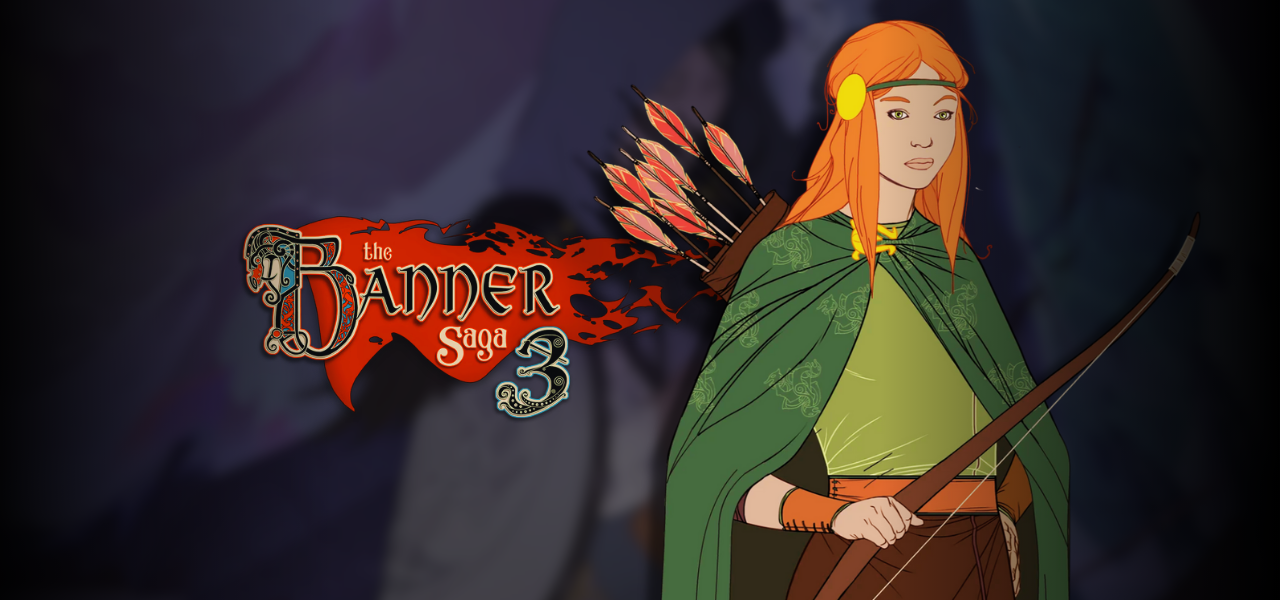The Banner Saga 3 — The Swan Song of the Norse Saga
After the release of The Banner Saga 2, Stoic publicly promised to bring the story to a proper conclusion, but they lacked the funds for an indie trilogy finale. Salvation came in January 2017 through a Kickstarter campaign: the $200,000 goal was reached in under a week, and the final tally hit $416,986. Along with the funding, the team gained an army of enthusiastic playtesters.
“We mostly felt relief and a deep sense of fulfillment — the community allowed us to finish the story exactly as we envisioned it,” recalls co-founder Arnie Jorgensen.
But did the developers truly deliver on their promise? Let’s find out!
Storyline or a World on the Edge

The Banner Saga 3 picks up right where the second chapter left off: half of the caravan has reached Arberrang, the human capital, while a chosen party ventures into the very “heart of darkness” in a desperate attempt to avert the impending annihilation of the world.
Once again, the player controls two parallel groups, switching between them every few chapters. Save files from the previous games are imported automatically, carrying over past decisions, party composition, character progression, and battle relics.
It’s still a grim road movie at its core, but now, every campsite feels like it could be the last. A looming time limit is woven directly into the narrative, and the ominous “days until Ragnarok” countdown pushes you forward more effectively than any ticking clock.
Gameplay and Key Mechanics
Though the mechanics stay familiar, the general design introduces subtle but impactful shifts.
Previously, we controlled two groups moving across the map, but now part of the game turns into a sort of fortress siege simulator. Our first party doesn’t move anywhere but must constantly fend off relentless attacks from a formidable army of Dredge amassed beneath the walls of the human capital.
We still have to make various decisions that can drastically change the battlefield situation for better or worse. The third installment of the saga is so steeped in drama and despair that a single wrong choice can doom the main character, sending the story down a completely different path.
All these challenges essentially create the looming “timer” for the second group, which is making its way toward the underbelly of the world.
But things aren’t any easier for the second group. New tensions are rising, time is running out, and their sanity is nearing the breaking point — beyond it lies madness. Only the protective barrier cast by Juno still offers some defense, keeping the heroes from turning into savage creatures twisted by the darkness. There’s no longer a sense of hopelessness—only panic, only desperation that makes you want to run faster and faster.
Combat System
The combat system of The Banner Saga 3 stays true to the formula established in the previous entries of the trilogy.
Battles unfold in turn-based fashion on a compact “grid board” with a fixed initiative order. Each warrior’s resilience and might are represented by two key stats: armor and strength. The former protects the latter, while strength determines how much damage a unit can inflict on an enemy’s strength.
The rules remain the same, and so do the enemies, mostly. The main addition is the warped, Twisted by the Darkness foes, but even they usually fight according to the mechanics of their original versions. As for the characters, most are familiar faces. And if you’ve imported a save where your heroes are fully leveled, your warriors will also feel exceptionally “tanky.”
Stoic already revamped the combat system once, in the sequel. They’ve done it again. This time, the base stats of heroes have nearly reached their development limit. In Banner Saga 3, new passive effects have been added — two for each stat, but you can only choose one. For example, further armor upgrades offer two options: either a chance to reflect damage or an opportunity to recover a bit of armor. Progression goes up to only level three, and the bonuses, while useful, aren’t game-breaking.
Their value becomes more apparent when you look at the bigger picture. First, by the middle of the game, a hero might have two or even three such abilities, offering protection on multiple fronts. Second, many artifacts increase the level of these abilities. Often — all at once. If you had a level 3 dodge and it became level 6, the difference will pleasantly surprise you.
Another step on the hero’s path to ultimate power is the title. The game offers thirteen titles, each of which can only be assigned to one character. Titles are strengthened by spending renown, and the more you invest, the higher the title’s level. “The Oathmaker” gains just one point of willpower at level one, two points plus one regenerated per turn at level three, and by level five, armor is also restored each turn, and the chance of a critical hit increases as well. Titles require massive investments of renown, which is already scarce when it comes to regular level-ups. But when combined with native abilities, a well-chosen title can forge a truly unstoppable force.
By the time your heroes reach level 15, they look almost godlike: they land critical hits more often than regular ones, and enemy blades bounce off them. In response, Stoic added a new twist — the enemy can now receive reinforcements up to three times during a single battle. Between these waves, you’re free to reorganize your battle formation to meet a fiercer foe — even a boss.
Why? There are plenty of reasons. It’s a chance to level up those underused heroes. It’s also an opportunity to earn a powerful artifact as a reward for surviving the final wave. And during the siege of Arberrang, these battles — as far as I can tell — buy you some extra time. Precious time that the second group desperately needs and is quickly running out of.
If your squad isn’t well-balanced and the fight takes too long, a strong wave of reinforcements will show up after 30 turns — and in most cases, that means restarting the battle from scratch.
Sound Design and Soundtrack

The sound design of the project remains top-notch. The impacts on armor and enemy bodies feel heavy and menacing, while the sounds of spells convey a sense of supernatural power.
The soundtrack of the third installment was recorded by Austin Wintory with the Dallas Orchestra and a chamber choir — resulting in a darker but louder sound compared to previous works. The final track, “Only We Few Remember It Now,” won the Hollywood Music in Media Award in 2018.
The pizzicato strings still weave perfectly into the rhythm of the marching scenes, while the brass and male choir bear down with crushing despair as the heroes step into darkness.
Accessibility
As before, the game’s accessibility is provided through a special mod created by a forum member from Audiogames known as Nonoce.
For the third installment, he had to release a separate version of the mod for reasons unknown to me.
The mod’s functionality remains largely the same as in the first two parts, so we won’t go into detail about the controls here (you can find usage instructions in the reviews of The Banner Saga: A Dark Story Accessible to Blind Players).
The only minor bug, which I hope will be fixed in future updates, is the inability to cancel a selected character action using the action-cancel button (‘B’ on Xbox, ‘Circle’ on PlayStation).
As of the time of writing this article (June 14, 2025), the mod does not support additional game modes such as “Survival” and “Endless Arena.”
Overall Impression of The Banner Saga 3
The Banner Saga 3 does exactly what a trilogy finale should:
- It brings every story arc to a powerful climax, unafraid of bittersweet or tragic endings;
- it adds fresh layers to the combat system without breaking its familiar foundation;
- it enhances the apocalyptic atmosphere both visually and musically, while staying true to its own identity.
The game expects that you’ve been through the hardships of the journey alongside its heroes since the first two parts — and for those who’ve been saving caravans since 2014, the finale hits like true catharsis: heavy, beautiful, and honest.
If you enjoy story-driven RPGs with tactical combat and Norse-inspired aesthetics, Stoic’s farewell march is not to be missed.
